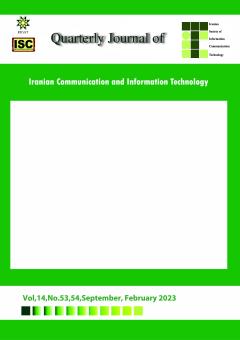Increasing Total Throughput, Reducing Outage to Zero, and Reducing Power Consumption in a Cellular Network
Subject Areas : ICTMohsen Seyyedi Saravi 1 , Mohammadreza Binesh Marvasti 2 , Seyedeh Leili Mirtaheri 3 , Seyyed Amir Asghari 4
1 - Student at Azad University, Qom Branch
2 - دانشگاه خوارزمی
3 -
4 - دانشگاه خوارزمی
Keywords: Cellular network, Throughput, Power consumption, Outage,
Abstract :
Quality assurance of providing remote services in cellular networks necessitates attention to significant criteria such as throughput, power consumption, and interference in these networks. Accordingly, this paper presents a framework for optimizing these criteria by assuming a limited transmission capacity for mobile nodes in a wireless cellular network as limitations in the transmission capacity often exist both in terms of hardware, battery limitations, and regulatory rules in the real world. In presenting this framework, a new idea was proposed once the existing methods were examined and their advantages and disadvantages were compared, respectively. After the formula was proved, the idea's simulation steps were performed via MATLAB. Present methods either increased the throughput by assuming unlimited transmission power or prevented some nodes from accessing the communication service. The simulation results showed that the proposed algorithm reduced the power consumption of mobile nodes in the network by a quarter in addition to increasing the throughput by 27%, and further operated in a way that no node would lose communication service
[1] M. Rasti, A. R. Sharafat, and J. Zander, “A Distributed Dynamic Target-SIR-Tracking Power Control Algorithm for Wireless Cellular Networks,” IEEE Trans. Veh. Technol., vol. 59, no. 2, pp. 906–916, Feb. 2010.
[2] Carlos Gandarillas ; Carlos Martín-Engeños ; Héctor López Pombo ; Antonio G. Marques, “Dynamic transmit-power control for WiFi access points based on wireless link occupancy 2014 IEEE Wireless Communications and Networking Conference (WCNC), 2014.
[3] M. Rasti, A. R. Sharafat, and J. Zander, “Pareto and Energy-Efficient Distributed Power Control with Feasibility Check in Wireless Networks,” IEEE Trans. Inf. Theory, Volume: 57, no. 1, pp. 245–255, Jan. 2011.
[4] Sheyda Zarandi ; Mehdi Rasti, “Energy efficient resource allocation in two-tier heterogeneous network with inband full-duplex communications”, IEEE Conferences Iranian Conference on Electrical Engineering (ICEE), pp. 2072 – 2077, 2017.
[5] Kamal Singh, “Optimal Power Control in Decentralized Gaussian Multiple Access Channels”, IEEE Communications Letters, Volume: 22, Journal Article, Publisher: IEEE, 2018 .
[6] Sixing Yin; Lihua Li; F. Richard Yu. “Resource Allocation and Base station Placement in Downlink Cellular Networks Assisted by Multiple Wireless Powered UAVs”. IEEE Transactions on Vehicular Technology, pp. 2171 – 2184, 2020.
[7] Z. Chen; k. Chi; K. Zheng; Y. Li; X. Liu. "Common Throughput Maximization in Wireless Powered Communication Network with Non-C\Orthogonal Multiple Access". IEEE Transactions on Vehicular Technology, pp:7692 – 7706, 2020.
[8] J. Zhao; F. Shen; J. Joung. Throughput Maximization with Rate-Dependent Power Consumption in Battery-Limited Multiuser Networks. IEEE Transactions on Vehicular Technology; pp: 1141 – 1146, 2020.


